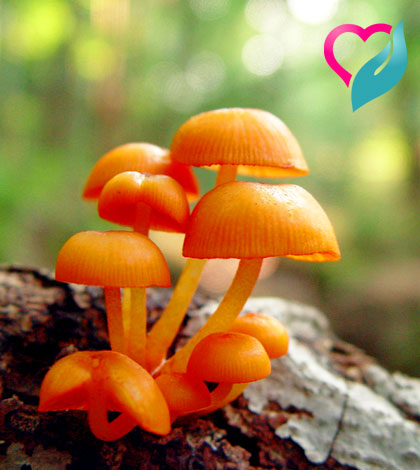Negative effects of mushroom
Let me put it very straight without any word of condolence. Mushrooms can even kill! Most of the mushrooms are not edible, are highly poisonous and look strikingly similar to their edible counterparts. Even certain edible mushrooms can go poisonous depending upon the substance they grow on.
[wp_ad_camp_1]
Don’t ever try picking them up from woods unless you identify them very well. Do not trust on the unknown vendors too. Always trust sealed products from reputed companies or those which you grow yourself under controlled conditions after buying their seeds (called spawns) from trusted source. Because a single poisonous mushroom among others can send a whole lot of people to coma, induce severe poisoning symptoms, nausea, vomiting, convulsions, cramps, insanity or worst, can kill them. Avoid eating discolored mushrooms or those which are different in color than the characteristic color of their species.
[wp_ad_camp_4]
Food Poisoning
Food poisoning is a negative side effect of mushrooms contaminated with campylobacter jejuni, a bacterium that can be present on commercially grown mushrooms. Improper cleaning or cooking methods, cross-contamination from other animal-derived foods or improper pasteurization be the cause of bacterial contamination, If you happen to eat mushrooms that are contaminated with the campylobacter jejuni bacteria, it might cause nausea, diarrhea or abdominal cramping. This bacterial strain is sensitive to extreme cold and dryness.
[wp_ad_camp_2]
Death
Store-bought mushrooms are generally safe for eating as long as you are not allergic, but wild mushrooms can be deadly. Many wild mushrooms resemble edible mushrooms, such as button mushrooms, or chanterelles, but are toxic and can be fatal if you eat them. Picking wild mushrooms for consumption is risky and not recommended,
Psychosis
One type of mushroom — psilocybin, or magic mushrooms — can cause hallucinations, delusional or irrational behavior, distorted sight or sound perceptions, dissociation from people or surroundings and psychosis, notes the National Institute on Drug Abuse. Psilocybin causes altered perception 20 minutes after ingestion, and the effects can last up to six hours. Psilocybin is eaten or drunk in a tea. It also causes negative physical effects, such as muscle weakness, drowsiness, nausea, vomiting and ataxia. Possession of magic mushrooms is illegal in the U.S.
Allergic Reaction
Spores produced by some mushrooms might cause extreme allergic reactions in some people. Certain people might have mold allergies that are triggered by eating mushrooms. Mushroom spores, also called mold spores, are released into the air in damp environments and can cause allergic reactions. Mold allergies can cause respiratory infections, asthma or lung disease. For this reason, federal and state regulations on mold and indoor air quality are in place.
The allergic reaction may be mild, causing itchy skin if touched externally, or cause throat and mouth itching if consumed. Allergic reaction can also manifest as stomach problems such as nausea, vomiting or diarrhea within even minutes of consumption or up to two or three hours after eating the fungi. Serious side effects can include throat closing, hives, dizziness and shock.
Identify Poisonous Mushrooms(Amanita Genus)
Below you’ll find a list of common characteristics to help you identify poisonous mushrooms of the Amanita genus. This list is by no means the final word! Weather and other environmental factors can change the shape of a mushroom, making it difficult to identify.
So please remember that this is just a guide to supplement learning, which should be done through books and especially guided forays. Don’t eat any mushroom based on what you’ve read here!
- Warts or scales on the cap. Note the off colored “patches” on the top of the picture to the left. These are the remnants of the universal veil that surrounds the mushroom when it is young. Sometimes these patches look more like rows of raised dots, as seen on the pictures further down
- A parasol or umbrella shaped cap. Each of these pictures is a good example of how an amanita cap is shaped, convex like a wide, upside down letter U. Or, for my fellow math enthusiasts, like an inverted parabola!
- The presence of a bulbous cup or sac around the base. This rounded cup is called the “volva” and is another remnant of the universal veil. It is often under the ground so you may have to gently dig up the mushroom to see it. The Amanita muscaria (commonly known as a “toadstool”) to the left is a great example of this bulbous base.
- A white spore print. When an amanita cap is placed face down on a dark colored sheet of paper, it will often leave a spore print that is white.
- The presence of a ring around the stem. This ring, called the “annulus”, is where the partial veil was attached to the stem before it tore apart as the mushroom grew. Check out the white mushroom to the left, you can see this ring quite clearly.
- Gills that are thin and white. The underside of this example shows the white gills of an amanita. Just another thing to look for when trying to identify poisonous mushrooms.
Healthy cooking Tips for mushroom
Don’t peel off the thin outer layer during preparation; much of the mushroom’s flavor lies in its skin. You can easily brush off residue found on cultivated mushrooms, which grow in special mixtures of sawdust and secret ingredients, but wild mushrooms—which grow in soil—need a more thorough cleaning. Use a soft toothbrush or damp paper towel to clean the caps. Do not soak mushrooms, as they will absorb water like a sponge and ruin their taste
Before assuming that any wild mushroom is edible, it should be identified. Proper identification of a species is the only safe way to ensure edibility
[wp_ad_camp_3]
Image courtesy : deviantart.net , st.gdefon.ru , cancercarecentre.org.au , blogspot.com , arborists.com ,























